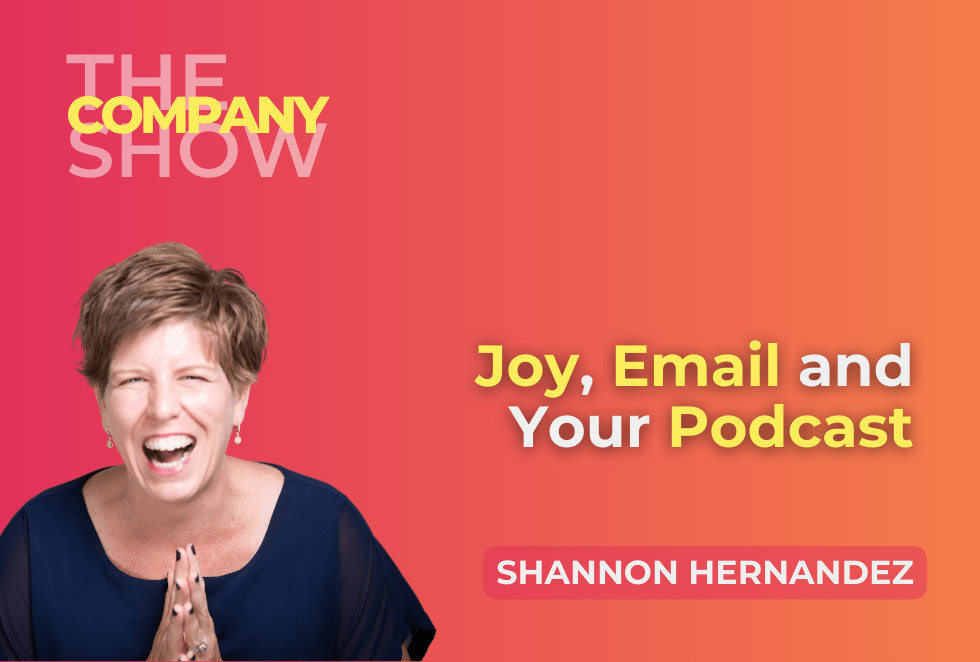I’m sure you’ve heard of the Pareto principle, or the 80-20 rule where 80% of consequences or results come from 20% of causes—or efforts.
On the one hand it’s great because you’re getting huge value out of some of the work you’re doing…. but which part?
That’s the rub and trying to answer that question is the work of entire industries and an important activity for business owners and marketing managers evaluating what they and their teams spend time on.
It’s one of the reasons we developed the Business Podcast Blueprints – so it would be easier to see what work was creating what results to facilitate strategic decision making. I remember when we first started One Stone Creative, and I was another one of those marketers who just kind of threw up her hands and said: it’s going to work but we don’t exactly know why.
It was only through years of experimentation, data collection and analysis that we started to see the patterns that let us codify the Blueprints into tools that could be used proactively to get specific business outcomes and the attendant clarity—from podcasting.
Most of us aren’t just podcasting through, we’re blogging, and posting on social media, making videos hosting events, and creating visuals.
And there’s an expert I’m really excited to introduce you to who is bringing a wonderful level of rigor and analysis to content marketing more generally, with a special emphasis on the king of all content—the email.
My guest today is Shannon Hernandez, the creator of the Joyful Business Revolution.
We’re talking about data, we’re talking about working according to your strengths, we’re talking about email the as-of-yet unseated, most profitable form of communication on the internet, and we’re doing it with Shannon’s specialty—absolute joy.
If you want to step up your content creation game and learn more about the power of email, listen to the episode below or continue reading the blog post!
Tune in to the full episode to learn about:
- The Content Personality Quiz
- Creating content outside your personality
- Why Shannon is shifting to email
- Podcasting and email marketing
- How to bring joy to the content creation process
- Cold emails and effective engagement
- How Shannon used The Business Podcast Blueprints
Don’t forget to join us for our free monthly strategy calls on the third Thursday of every month!
Why Joy?
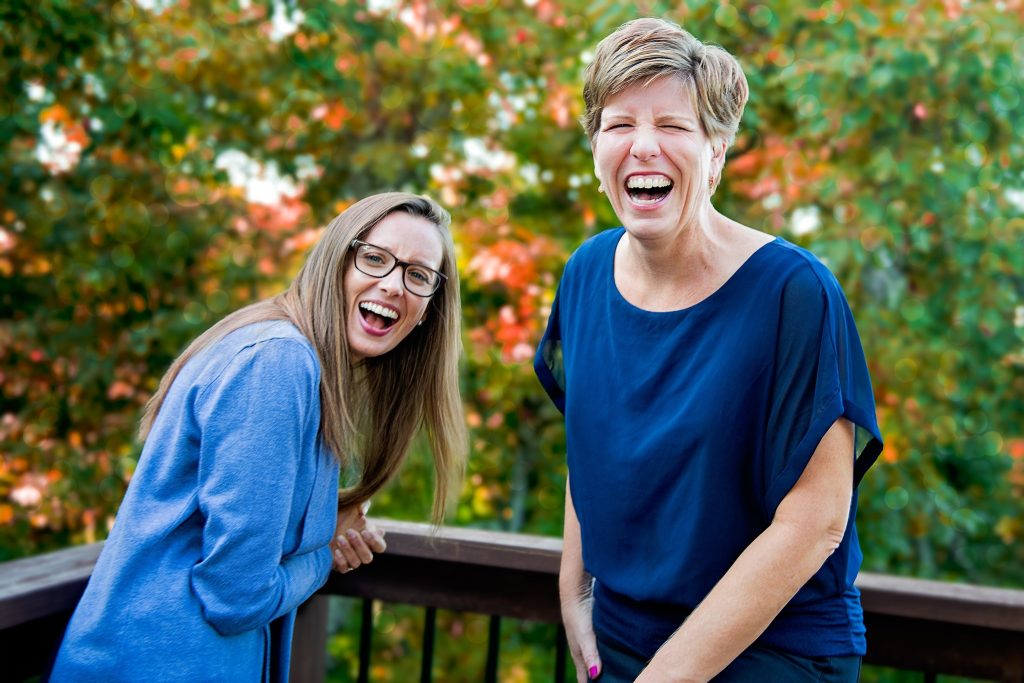
Shannon Hernandez (right) with her Business Partner Amy Hagar (Left)
Shannon: “Well, I think we all come to the thing we want to focus on by pivoting more to what we want in our life. And for the very long time, since the early, early childhood, joy or sadness or grief or none of that was actually allowed in my household.
There were no speak of emotions. And if you did talk of emotions, it was like, get your heart off your sleeve or toughen up or dry those tears. So for years, I couldn’t even identify any emotions. I was seriously emotionless, which in all essence, as I look back, I was cold. It was just a cold way of living and going about life.
Over the last, I’d say, 20 years, I’ll be 47 soon, I really dove into what would bring me joy, and that has been the central question of my life through all the ups and downs of business, through a drastically changed marriage from where it started and through rebranding my company a couple years ago to Joyful Business Revolution.”
“I can’t sell joy. I’ve tried.”
Shannon: “I’ve asked myself several times over the last couple of years, did I make a mistake in picking joy as the leader of the brand Joyful Business Revolution?
Because early on, we attracted a lot of people who were not joyful at all, and what they wanted was joy. And I did my best not to beat myself up over this decision, knowing that my mission in this world is to make every single space that I show up in, in person or virtually more joyful than when I left.
I am living my values, I am living my mission. I am living what I believe, and I just had to get way better at the messaging that you will have a joyful business when you actually get your damn marketing working for you, and not until then.”
The Content Personality Quiz
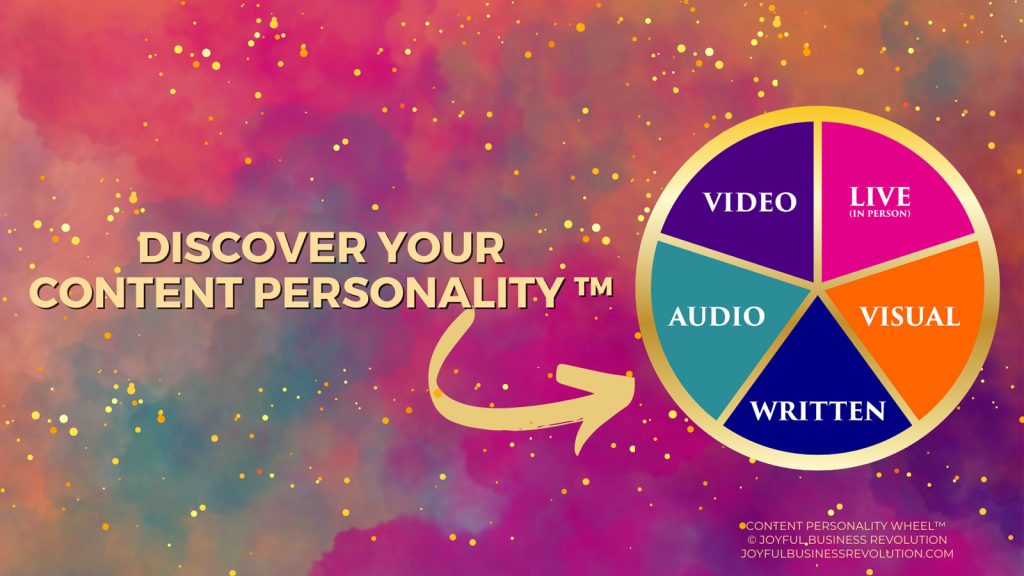
(Take the Content Personality Quiz right here!)
Shannon: “Nine years ago, stroke of luck, I would say, I developed a quiz and this quiz is called the Content Personality Quiz.
This quiz came about because I had phone call after phone call of people that were being asked or thought they needed to do things in their marketing that they didn’t want to do at all.
But they were being coached or consulted in such ways, such as we’ve all heard it before, you must have a podcast to be successful. You must write a book if you’re going to be perceived as serious. The list could go on and on and on.
So one night, I laid in my bed and I decided, because I couldn’t sleep, I needed to solve this problem. And the problem was, if I could get a way to have people identify their natural superpower in their content creation, in their marketing, how much better would the world and business be?
Because now we’re not jumping from platform to platform. If you don’t want a podcast, I mean, Megan’s in alignment with me here. You don’t have to have one. If you don’t want to write a book, you don’t need to write a book. But let’s find the things that you’re already great at and home in on those.
And so that night, sleepless night, I drafted the very first content personality wheel with a black sharpie on a white piece of paper. And there are five content personalities to this day. There were five when it was born, and we developed an eight-question quiz.
Now, back in the day, it was literally before there was any, like, quiz software, Interact or anything that we use now, people had to print a PDF and tally it up and then, like, go find what their answer was.
But lo and behold, eight or nine years later, it is validated. We have helped thousands of people around the globe get aligned with their marketing, get aligned with their content personality, and simplify it all.
I just wrote a newsletter this morning, as a matter of fact, about lucky. Was I lucky to be able to have a lead magnet that’s worked for me to do the heavy lifting of marketing sales for nine years?
I think I was, because that’s pretty much unheard of, that people can land a lead magnet that has this longevity. And I’m really proud of the body of work.
My vision for the body of work is that it is as well-known as Enneagram, the five love languages, human design, and all of those others. And we are putting a lot of focus on that starting a little later this year.”
Navigating Content Personalities as a Podcaster
We’re going to dig into it a little more. So the different content personalities, each person is going to fit more or less into one of them. That’s going to be the type of content that they find the most ease and joy in creating.
So looking at it from a podcaster’s perspective, some of the content personalities, audio, an argument could be made for live are going to fit really naturally within that. But what if you kind of find yourself with a content personality? And I’m a written myself, having taken Shannon’s quiz, and yet I have a podcast.
How do you square when you want to make a type of content that isn’t within your personality? Maybe because you feel like you were called to do it or you’ve got a good business reason for it. How do you manage that situation?
Shannon answers all of these below:
Creating Content That Isn’t Within Your Personality
Shannon: “Well, I guess I would ask you, Megan, do you sit down and script out your episodes in writing before you actually record?
**Megan: “**I do.” Shannon: “Okay. Well, there you go. You start with a form that you’re dominant in and you script to your little heart’s content until you’re happy with it, and then you have the confidence to bring that body of work forward in the audio content personality.
I’m a live content personality, and my business partner, Amy, had to convince me to do a podcast. We actually launched the podcast last year, and this is number five in my lineup. Like, it’s five out of five. It’s like, way down there on the list.
She said, I realized that for us to make this joyful for you, one, you’re not going to be by yourself, talking by yourself. That’s going to be horrible. And two, you better be able to see me.
So we get on and we record on Zoom so that I don’t feel like I’m doing this in a silo by myself. And she was right about needing a podcast. I mean, her thought was that there are a ton of people that listen to podcasts, that if we had one, they would be exposed to their own content personality, be able to take the quiz.
And she was exactly right. A year and a half in, she was right. But we had to find a way that it would work for how I like to create content.”
The Challenges of Solo Podcast Episodes
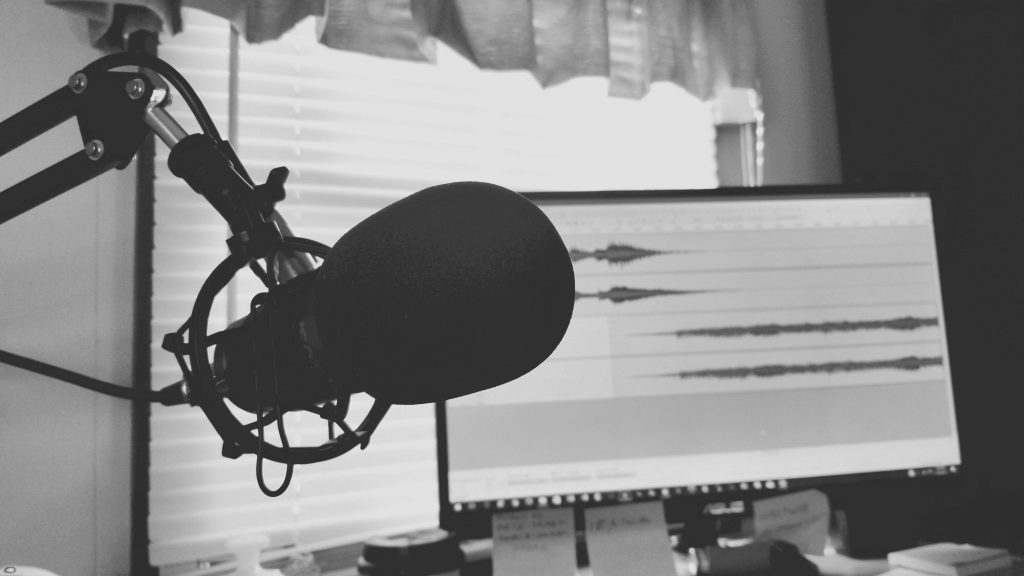
Shannon highlighted something I just want to point out a little bit too—the difficulty of a solo episode is often really undersold.
Very often you hear, if your guest cancels, just record a solo like it’s nothing. It’s actually ten times harder than having an interview or conversation with someone.
And Shannon and Amy, I like the style of their show. It’s a co-hosted conversation, as it would cause most of the time, it’s the two of them talking to each other with occasional guests, which we’ll be digging into more later.
But it does really have that dynamism of being able to talk live with someone. And of course, then we’ve got video content personalities and podcasts can be in video that sorts them.
Live content personalities—great, make sure you’re recording with somebody. Written script in advance.
Audio content personalities—you just have to turn on the mic and talk, you lucky jerks.
Talking About Visuals
Shannon: “Something interesting that actually happened as a result of the content personality body of work was I had a business owner who came to me and she was in the witness protection program.
The picture that was even on her website was not her. She could not reveal any of her identity for protective purposes. And she scored as live in person. And we were like, Wow, how are we going to do this?
This was early on when I didn’t have like all the 171 ways we can market ourselves. So I dug in deep with her, and what we realized is she would do audio over a, maybe a Zoom presentation or SlideShare back then, that’s what it was, and she was so wildly successful.
People felt like she was with them, and she felt like she was with them, but she never showed her face. She didn’t do live events like she never did any of that. And we were able to help her build that blogging business to six figures and beyond.
That was one of the very first—I could cry just thinking about it. And I’m like, I am onto something. If I can help somebody that has a live content personality build a business that’s wildly successful without giving up their identity and their safety, I’m going to continue to dive into this body of work.
That was just a fantastic testament to how creative you can get when you may think you have no other options. And I always say, let’s talk about it. You’re probably not in witness protection program, and I bet we can find something that’s enjoyable for you.”
Visual: The Fifth Personality
Let’s jump onto the fifth personality just for a little bit—visual, because that, I think is maybe the least natural fit with podcasting as a marketing channel.
If I was a visual content personality and I said, I would like to create this kind of content. How might I go about enjoying that a little bit more?
Here’s how Shannon would answer:
“Well, off the top of my head, I would say, let’s throw your images, or whether they’re graphics you create.
Maybe you’re a photographer, you know, there’s a lot of different visual aspects. Maybe you design animated videos or you design comic strips or whatever that is.
There’s no reason you couldn’t use a video podcast with the same idea of sharing the screen. For all intents and purposes, if people know what Loom is, I love Loom in terms of being able to share what’s going on and talk people through it.
Something along that line, I think would make a really engaging podcast with the images up and the voice and the personality, you know, behind it, explaining their process. Because visual people are usually very, very creative.”
The Shift to Email
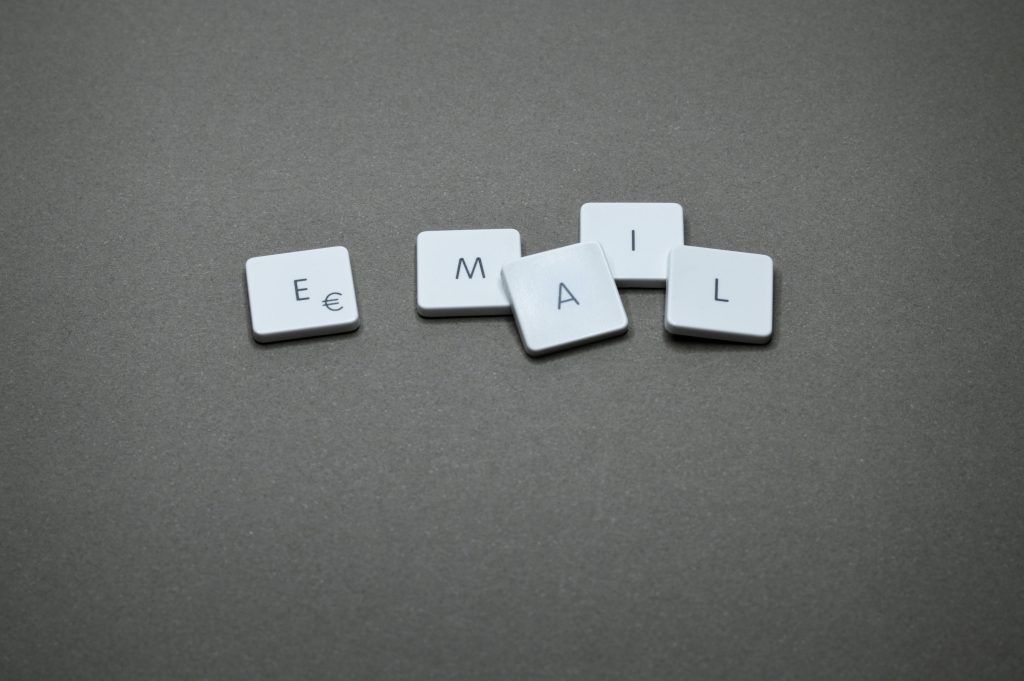
Shannon has been making some changes and pivots in her business over the last few months, and it’s been just thrilling to witness as a member of her community.
She is starting to focus more and more and more on email.
Here’s why she’s making that pivot within the work that she does and what she’s teaching.
Shannon: “Well, there’s a lot of reasons, and if you’re new to me, you’re going to find out real fast. I’m just a straight shooter, so I’m just going to say it like it is.
I got really tired of having to talk people out of things that they had been coached to do, like twelve reels a day. I had someone come to us, we didn’t sign them as a client because my job is not to convince anyone that they need to do anything differently.
Like, I’ll have the conversation and support you. But she was absolutely convinced that if she did not post every 2 hours around the clock on Facebook, including when she should be sleeping, her business would die.
I just got tired of having these conversations. And she has, for all intents and purposes, this person has a very high seven-figure business. But that is not a healthy relationship with yourself, with your business, with the rest of your life, with a marriage, or whatever else may be going on.”
I got tired of that kind of mentality and the more that social media influencers and influencing grew, it got worse and worse for me because people saw marketing strategists and they said, ooh, she can help me become an influencer or whatever.
All the things they wanted was things that I didn’t even want to touch, to be honest. And this is why you and I resonate so deeply. I am about deep tested, tried and true results, thought leader content, methodology, and frameworks and longevity of content over time.
I am the 2500 word a month SEO blogger. That’s going to happen every month. And I am the person who starts all my content creation with the email because I really believe in email marketing.
So that was the first thing that was going on and I probably thought about it for about eight months. And as we all do, it’s like, wow, what will happen if I niche down even more?
For me, it wasn’t a matter of knowing that the market would eventually catch up and people would catch on. It was, wow, I’m going to do this again.
I just rebranded to Joyful Business Revolution. I’ve got all these new people in my world and now I’m going to niche down even more. So that was the first thing.
Content Revenue Audits
Shannon: “The second thing is I did a content revenue audit and I haven’t talked much about this, but I’m so glad I get the opportunity today.
I dialed up my accountant in January and I asked her to pull 48 consecutive months of revenue and to send them to me month by month. So over the last four years, and I looked at the highest amounts of revenue per month for us, that was between 50 and 80k a month.
Then I backtracked my content to 60 to 90 days out. So what was I talking 60 to 90 days before we had an 80k month? Or what was I talking 60 to 90 days before we had the 50k month, when all the other months may have been like 25 or 30 or 35k.
This was an interesting exponential exploration for me as a founder, the person who’s in charge of marketing here at Joyful Business Revolution, but also as a marketing strategist for other people.
What I discovered is during that time of the highest months of growth, I could correlate the content to talking about the sustainability of business through email marketing and the sustainability of business through expansion and not burning out your energy, burning yourself to the ground over hiring, doing those types of things.
That was so enlightening for me and as soon as I had the data right, I had the intuition, but I’m also like a scientist and I love data so I check my numbers all the time against my intuition.
As soon as I married both of those, I was like, oh yeah, it’s on now. I am going all in on email marketing. And I don’t know if you can tell, Megan, because you’re in the community, but this is my jam. Like, I should have been doing this ten years ago.”
The Reason Behind The 60 to 90 Day Range
Shannon: “Well, I know just from over the years, and even in my own business, when I’ve had crashes, right, not everything’s roses, obviously.
But when I’ve had crashes, it’s been because of what I was talking about 60 to 90 days before. And so I often tell our clients, we’re going to get in and we’re going to get started.
Maybe we’ll need a couple of weeks to look at the messaging and get ready to roll new stuff out, but then we’re going to really see what happens over the next 90 days.
And one, it just takes people, our listeners, our readers, it takes some time to, like, get on board with what the hell we’re doing. Honestly, it does.
Many of us are fast creators, but it doesn’t mean people are fast adopters, right? Many of us are fast creators. And yes, I love email, and I send one every Monday, and I’m like, oh, I asked people for a reply and I didn’t get any Monday. Well, Shannon, they’re going to work.
Let them go to work, have their week. The replies come in when they get to reading it later in the week. So just as everything else, you plant a seed in your garden, it takes time—the water, the sun, the soil for that seed to sprout.
And if you really think of your business as a garden of seeds and you’re constantly planting seeds, this is the analogy that makes the most sense to me.”
The Marriage of Podcasting and Email Marketing

Shannon: “This is a funny story. I got to the end of last year and I was like, oh, my God, I don’t even think my email knows I have a podcast.
And lo and behold, it was true. And I was like, wow, Amy, we did a whole year of content and our community doesn’t even know we have it here, you know, unless we one off talked about it somewhere.
So I decided this year I was going to fix that shit. And this year, we send out two emails a month. I call them Sunday vibes. They land on Sundays, and they are a recap of the last few episodes that have been published. The takeaways, asking people to leave reviews, which, Megan, you ask and they’ll do it. Imagine.”
Megan: “If you’ve put in the time building up the real community. They will, for sure.”
Shannon: “So we had to tell people. And, you know, I just sent a funny email and said, hey, I don’t recommend you ever do this, but we have a whole years of content. I forgot to tell you as my email community that we have a podcast. So here you go. Go. Binge. Listen, have some fun.
Megan: “I bet your engagement was great on that email, am I right?”
Shannon: “Yeah, it was.
And the episodes, I didn’t list them all, but I went and looked at the stats and I pulled the top five that had been downloaded, and those were the ones that I put into that initial email just to give them some kind of focus of where to go.
But since then, we have people, they’re coming to our workshops now, like, people that we’ve never met. And in the Q&A sessions, they’re like, well, I listened to every episode in your podcast, and I know that you said that this is this, and I’ve been doing this.
I’m like, Amy, there’s real people actually listening and doing what we’re suggesting.
It’s been really fun. It’s been fun. I mean, I know they’re listening, but as a live in person, it’s fun to have them sitting in my workshop getting the feedback live, right?”
Personal Connection Through Podcasting
That’s kind of one of the amazing things about podcasts and one of the things that it’s really hard, I think, to communicate to someone who is either not a podcast listener or someone who’s just not really familiar with it.
The people who listen to your podcast, they feel like they know you. I get into trouble with this a lot. As a producer who listens to a lot of our client shows, I feel like our relationship is far more advanced and more intimate than it actually is.
And sometimes that means they are acting in a very awkward way because that relationship is there, even if it’s one sided.
So when you do get someone coming into one of your workshops, which is exactly a perfect use case for a podcast, they’re ready. They know you. They are ready to buy what you’re offering. They’re ready to work with you.
It’s such a shortcut to so many elements of business.”
Optimizing Your Email Strategy for Podcast Promotion
Shannon: “The other thing I want to say about email and getting the podcast out in email—I added a footer to every email that goes out on Monday that says, hey, do you know that we have a podcast called grow your business for good? We’d love to see you there.
So they’re constantly seeing it every Monday, over and over.
The other thing I did, and I’m really excited about this, I hope I can do some more blogging or newsletters or education around it—but I finally, after twelve years of business ownership, I figured out a nurture sequence where only the first email changes and the other three or four stay the same.
People have been asking me like, holy shit, how are you putting out so many lead magnets? Like we’ve got email bingo, we’ve got 65 story ideas, we’ve got the quiz, we’ve got the Joyful Content Creation.
All of those have come out minus the quiz in the past year. We’ve got the Business Expansion Scorecard. And I finally just decided to quit making it hard on myself.”
Email 2
“And I decided that email two, which is now called my best content plugs the podcast, plugs our documentary, plugs my book.”
Email 3
“Email three, sets the expectations for the community. When they can expect to hear from me, they can always reply, we’re human here, those kinds of things.”
Email 4
“And then email four, I can’t remember what that is right now, but the point is, how brilliant is that, that we all have worksheets, we have PDF’s, we have things that we could be using for lead magnets to reach people at different points of their customer journey.
And I realized what slowed me down is what slows a lot of people down—t’s doing the damn nurture sequence.”
Steal this tip!
A nurture sequence, if well designed and working well, can be replicated for every opt in that you have, you only need to change the first email delivering that opt in, that is brilliant. Everyone steal that.
Tips for Bringing Joy to The Content Creation Process

As business owner, sometimes we have to do it when it doesn’t feel particularly joyful. Sometimes, there are deadlines.
Maybe we have a boss. Maybe we are the boss who is a jerk and making us do it.
How can you kind of bring a little joy to a content creation process that is maybe just not feeling in that moment like any fun at all?
Here’s what Shannon has to say:
“I’ve answered this question a lot over the years. I think the number one thing is let’s ask ourselves and be real. Are you creating in your content personality, first and foremost? That should be the first question.
The second question would be, are you excited about your content or the content that you’ve been tasked to do something with? I’m not doing any dry content shit around here. Like, that’s just not going to happen. I’m the marketing strategist for the brand. And when people bring me on for their clients, we build creative campaigns, we build fun ideas.
I want to put the joy into the content creation because you’re marketing the energy out also, I believe, is the energy that comes in, so we need to be in a really good space there.”
When should you create?
Shannon: “Now, if you’ve done that and you’re still not finding joy, a lot of times I have to work with my clients around things like, when is your most productive content creation time?
For me, it’s first thing in the morning before I do anything else. If I check email, if I watch the news, I don’t even watch the news anymore.
I helped a client this morning quit turning on the news in the morning. It’s sabotaging everything that’s going on in your brain and let’s get the content done.
Some people are night owls. They’ll put their kids to bed and they’ll create it well into the wee hours of the night. Whatever it is, it’s fine. But you need to honor the time that you are most excited and fresh for content creation.
Create your ritual and reward
If you’re doing all of those things and you’re still not joyful about your content, my last little tip of advice is I help our clients build what we call ritual and reward around the very things, you know, in this case, content creation.
But there’s other things too, like scooping the cat litter box, picking your kid up from the sports line, and you’re in the car line for 30 minutes or whatever it is.
The way ritual and reward works is you take a few minutes and you do a ritual. I do this every week when it’s time for me to look at business numbers, and I don’t know why, I quit questioning it doesn’t matter.
My brain still loves to tell me, even though we’re, like, crossing into the millions in a business, I’m still not making money. My brain loves to tell me that every single week.
Every single week, I do ritual and reward. Monday morning, I light a candle, I do a little meditation.
Then I open up my spreadsheet, I do my numbers for the week, which takes me about 15 minutes.
I prove to my brain that we did make money last week, and then I close it and I go for a run.
So the ritual gets you ready for the task. The reward is the thing that you attach to the end of it. And I even have to do this, 13 years in business for follow ups. I don’t know why. It doesn’t matter why anymore.
The point is, is that I need to be following up with people if we want to get paid. So I have to ritualize and reward that shit every single Tuesday when it’s my follow up day.
It really does work, and it really helps you do the things that aren’t so joyful in the moment, but you know that the end result, the money in the bank, is going to be worth it at the end.”
Do Cold Emails Work?
I wanted to share with you something really interesting that happened to me recently because I received something that I have in my life very rarely received, and it is what I would call an excellent cold email.
Now, cold emailing is, I’m sure, a whole kettle of fish in your world, but this was one I thought was supremely well done in that I responded to it, had a conversation with the person who sent it, and overall, it was a very pleasant interaction.
Was this really a rare occurrence from your standpoint?
Here are Shannon’s thoughts:
“I’ve never responded to a cold email, and it’s because most of them are telling me I’m doing something wrong.
They are pointing out why I don’t have 100,000 Instagram followers, which, by the way, I don’t want 100,000 Instagram followers.
And they’re assuming the assumptive nature of most of the cold emails is just a big turn off.
So what did this email do that had you respond? I want to know.”
A cold email that I responded to
Megan: “The subject line was right up my alley. It was podcast case study, three words, as you recommend.
The subject was, hey, as a fellow podcaster, I’ve got this cool case study about how we got this really specific result in a certain amount of time. Would you be interested in learning more?
And that was it, then just the signature, and that was the whole email. And so I responded, and I was like, actually, sure, that sounds interesting. I’d like to know more what happened there.”
Shannon’s breakdown:
“We’re going to break down the psychology and the anatomy of a very good nine-word email. Nine-word cold email.
I forget who coined the term, but years ago, he came out with a nine-word email.
I don’t think I’ve ever gotten my quote unquote nine-word email down to anything less than 16. But I still called a nine-word email because of the format.
So, here’s what happened. This person reached out to somebody who was relevant target audience with a relevant thing, a podcast case study. It had three words in the title, and it opened.
Did it have your name, Megan?”
Megan: “No, it just said hi.”
Shannon: “That’s okay. So it said hello or it said hi, and then it asked a simple, direct yes or no question. There was no are you doing your case studies wrong? Let me show you how to do a proper case study, which is how most of these cold emails come in.
From a psychology of messaging email marketing standpoint, I’d say the person knew the target audience, the person knew the title that would catch the attention in the inbox, and the person knew that if you want a response in an email, most of the time you keep them short and you ask a very simple question, especially on a cold outreach.
So what happened? Did you respond?”
Megan: “Yes, I responded. Sure. Sounds interesting.
And then I got a response back quite quickly with a little more detail about kind of the scenario, a link to a case study, which was respectable, and then a little detail about the thing that they were selling, which was some kind of tech.”
Shannon: “I say it worked.”
Effective Email Engagement

Megan: I’d been sold by that email. I had been part of a sales funnel, obviously but I felt pretty good about the whole thing. It wasn’t rude, it wasn’t aggressive, it wasn’t pushy as you punish it. It didn’t make me feel bad about myself.
It’s such a unique experience in my inbox to find a cold email that I actually wanted to respond to. Interested to understand why that was so effective.
Can AI email tools be genuine?
Shannon: “Well, I’m wondering if the response came very fast. I’m wondering if it was an AI, something on the other end looking for a yes or no.
I know that in the world of social media you can use a tool called ManyChat. And what happens is you could say like, hey, I’m offering an email marketing workshop next week. Dm me the word “email” and I’ll get it back to you and it automates the message.
Now, I will say either I need to break my own mindset about this AI stuff, which has not happened yet, or I need to quit doing this because I spent an hour yesterday hand delivering the story marketing resource to people.
We had hundreds of people say they wanted it, and, you know, I delivered it one by one. That’s what we do here. We’re human on the other side. I’m not using a Manychat model or something like that now.
Maybe if I had thousands, I might have to reconsider that. But for now, I wonder if it was a bot on the other side.”
A middle ground between AI and efficiency
Megan: Maybe it was AI. And if so, then it was the least angry I’ve ever been at talking to an AI.
I might have a middle ground for you on that hand delivering text expander. So you can just type in one or two keystrokes and it’ll paste your whole response, still a human. You have to paste in the keystrokes yourself, but it will maybe cut some of that hand delivering time down a little bit.
How The Business Podcast Blueprints Inspired Shannon to Make Some Changes
Recently, Shannon watched one of our trainings, Podcast ROI: The Missing Metrics, and she made some changes in your podcast because of it.
Production and SEO pivots
Shannon: “First, some things that I did, I hired someone to edit our podcast. For all intents and purposes, baby step, it’s light years above where it was. I can still do light years more, but for now it’s good. I got a mic that works. Baby steps—I am not the tech goddess of this household.
The second thing that I did is I decided I was going to pair up the SEO research that my SEO person did for delivering me blog briefs that I can actually rank for. My biggest competitor is HubSpot, and I’m never going to win. They’ve got content writers just cranking shit out.
Anyway, we found what the keywords were. We found what would happen on the blog side, and then we backed into companion podcast episodes to support the blog post.
That was really important for us and what it’s done, and then I’ll talk more about what we did within the show, but what that did for us is, you know, we can post on our podcast page, the new podcast is out, you can see the companion guide, email marketing for coaches or consultants or whatever—click here.
So we’re building a robust body of work with SEO keywords that we have a chance. I know it’s going to work, so I’m not, like, trying to compete against HubSpot now, which I didn’t know, you know, I’m not an SEO expert, so I needed some help on that part.
So that we did, and I’m super happy about it. And we’ve got our second round of blog briefs in all on brand messaging, and we’ll be tackling that next.”
Changes in podcast strategy and guest selection
Shannon: “That was really important to me because I am somebody who wants to go really deep with people so they understand what they get when they work with us.
And I know some people are written, so they’re getting the blog post. Some people are audio, so they’re getting the podcast. We’re also putting it on YouTube, so they’re getting it. We’re letting them download the visuals that we talk about, so the visual people.
So I’ve encompassed even all the content personality around how we share the podcast, which is huge. It’s actually a really, really smart thing that we’re doing here.
Within the podcast itself, Amy and I had always been the only people on the podcast, except one season where I was doing a lot of traveling, she interviewed our clients, but outside of that, it’s always just been her and I.
We decided this time around we would get six topics that were based on the blogs, and we would do those six episodes. And by the way, my blog brief served as a beautiful script that we didn’t have to write. So yay for triple dipping, as I like to say.
Then we added two guest experts at the end, carefully curated and selected to expand on the things that we had been talking about.
That was a strategic move for us because one of the things you said in your podcast strategy training that I went to was being able to reach a wider audience through the help of collaborations, but also being able to secure more connections and things of that nature with getting some guests on. So that’s been fun.
And I actually run those by myself. We didn’t want to have three people there, so I just step in and do those.
I’ve really been thinking about, and imposter syndrome is real, so I have been making a list of all the people I admire that are light years above me that I want to invite to my podcasts, and they’re all saying yes.
Every single one of them are saying yes. And that to me is really exciting.”
The Business Podcast Blueprints at Work
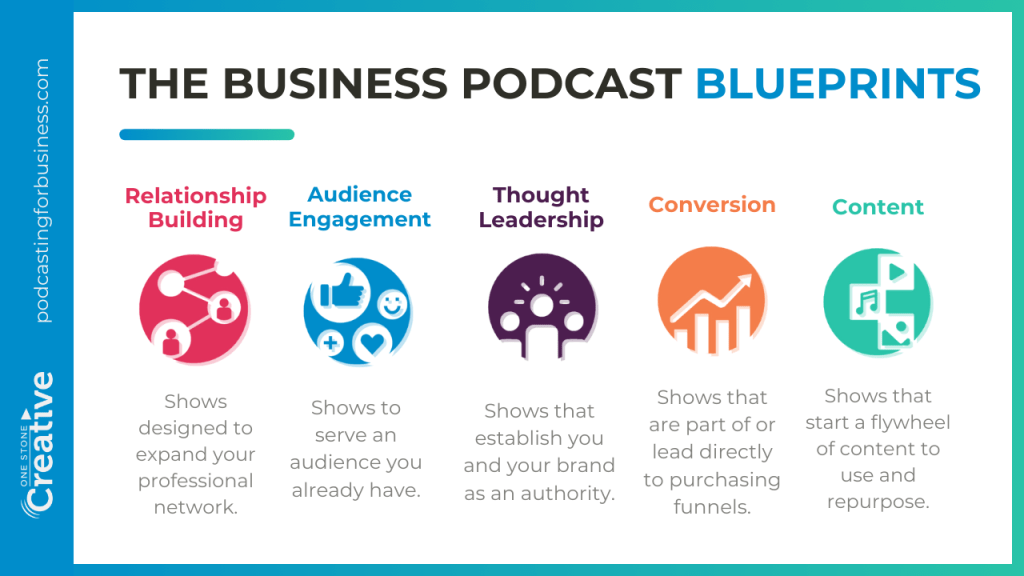
It’s so exciting. I’m so delighted to hear about all of this. I love Shannon’s wish list of people who are feel so out of reach. Will you be on my podcast? is the magic calendar opener.
We’ve been saying it for years. It is such a great way to begin a relationship and I love how she were standing here to put it in Business Podcast Blueprint language just a little bit.
Shannon came at it optimizing for content metrics to get that SEO to supplement her blog, to just build really rich, interactive and highly accessible content for her people. Absolutely love that.
And then added a relationship building element to your audience engagement style podcast. So she’s nailing three really key areas of the blueprints there.
It’s so cool and it’s so fun to see it happening.
Building a Special Playlist: Founders and Their Missions
Shannon: “I will say being in your world has inspired me to think differently about my audience and my goals and my connection, and not particularly my podcast, but on my YouTube channel.
I am now building playlists and I’ll just kind of be the first to spill the beans here and if anyone’s listening and you like to be a guest, let me know.
So I signed two clients really fast on this. Let’s get your lead magnet reworked, your nurture sequence, your landing page.
And I realized when I went back, they gave me their credit card. They didn’t even care. Like, that’s just what they wanted and they didn’t care how much it was.
Now they were respectively, about 600,000 a year and 850,000 a year in revenue. So that’s part of why they could just give me their credit card and not worry about it.
But what I realized as I was sitting in my chair this weekend is I want to do a special playlist on founders and their missions of people who are making 500k and above and one, I just love hearing about people’s missions.
I know in my own journey, when I didn’t have to worry so much about the revenue anymore, I could really align everything I do with the mission that we are about here. And I’m excited to meet these people. I’m excited to interview them, I’m excited to share their story.
But you better believe I’m going to turn around and ask them, would you like help with your email marketing? And so I’m going to use it as a client acquisition tool as well.”
Megan: “Look at you, the live personality, doing all this broadcast media.”
Shannon: “I know, what has happened to me?”
Learn more about Shannon and Joyful Business Revolution
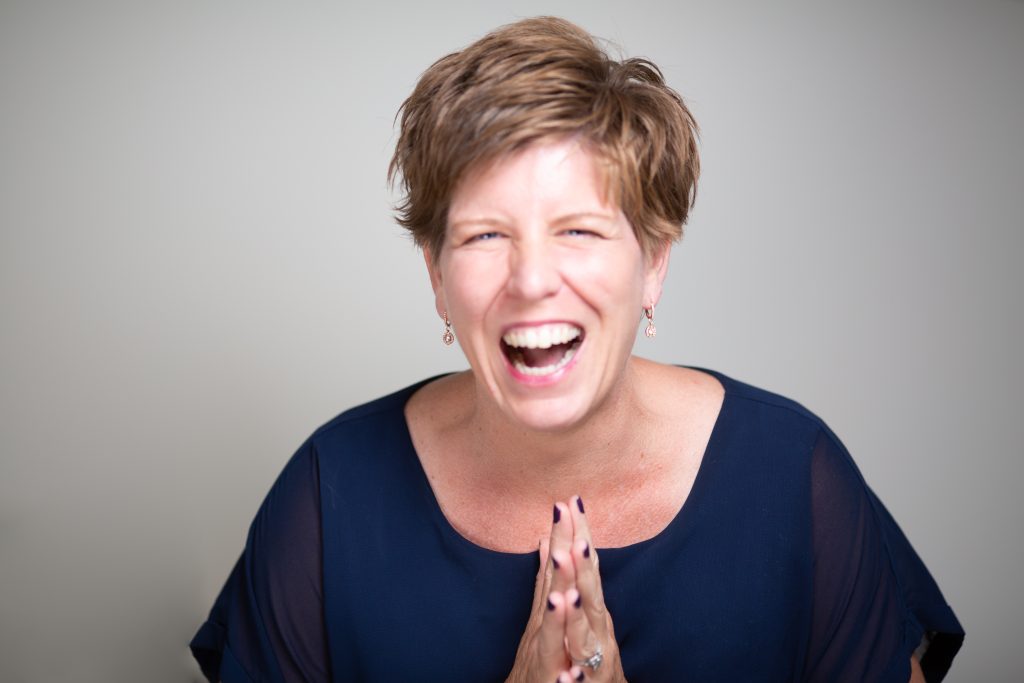
Shannon: “You can find everything at joyfulbusinessrevolution.com.
You can connect with me over in LinkedIn. Tell me hello, please. I’m a human. Send me a message if you’re going to connect with me. If you want past the gate.
If you want to take your content personality quiz, it’s joyfulbusinessrevolution.com/quiz that will help you see exactly what your natural marketing superpower is and you can go have fun dominating the world with your own content.”
Final Thoughts
Talking with Shannon really made me think about the different ways we share the podcast episodes we create.
When we’re in the thick of it, service clients, developing new business, creating content and everything else involved keeping the show running, it’s really easy to forget that we, and maybe some key team members, area really the only ones who know the whole picture of what we’re creating, when and for whom.
What we take for granted, other people are utterly astonished by, like in Shannon’s example of creating a whole podcast and realizing oh, we haven’t actually announced this yet.
Often as business owners we’re working in isolation and just getting an outside view can be a challenge but it’s always worth the effort, and that’s why programs like Shannon’s Content Personality Club, and the community we’re both a part of, The Dames, can be so valuable.
Make sure to check out Shannon’s work at Joyfulbusinessrevolution.com
Who you know is critical – and who you know that is willing to give you feedback might be even more so.
Podcasting for Business Conference
This reminded me of one of the talks at last fall’s Podcasting for Business Conference, Andrea Marquez gave an amazing presentation on user testing your podcast.
This can be such a valuable thing to do for your show while you’re still in the development process, or looking at a rebrand – and especially if you’re not surrounded by people who know podcasting, content marketing and your audience intimately.
Here’s why that is so important:
Obviously no one wants to start over, and the sunk cost fallacy is REAL—when we’ve invested a lot, we don’t want to scrap it. But sometimes it makes the most sense and it’s just another reason that having good data around your podcast and the value it creates is so important.
Because a Company Show needs to be adding value to your business, and you need to know what that value is.
The more you can get right out of the gate by doing effective research and testing in advance, as well as, as Shannon spoke about, having effective and intentional emailing strategy around your work, the more value your show is going to generate—faster.
You can watch Andrea’s full presentation and learn a lot more about user-testing and what an impact it can make on your show by grabbing the recordings of the event.
Start levelling up your show at PFBCon.com. You’ll get access to over 20 amazing talks absolutely brimming with valuable insights.
Need A Podcast?
As always, this is Megan Dougherty, and The Company Show was made possible by the team at One Stone Creative.
If you know a business owner that you think should have a podcast, do us a favor and send them to podcastingforbusiness.com!
Key Quotes
“I’ve asked myself several times over the last couple of years, did I make a mistake in picking joy as the leader of the brand Joyful Business Revolution? Because early on, we attracted a lot of people who were not joyful at all, and what they wanted was joy.” – Shannon Hernandez
“If the only way to keep my business going was an email every 2 hours on Facebook, I just burn it to the ground.” – Megan Dougherty
Resources
One Stone Creative | LinkedIn | Twitter | Facebook | Instagram
Make sure to check out our free Monthly Strategy Calls!
Podcasting for Business Conference 2023 Recordings
Learn about what other business podcasters are doing:
Shannon Hernandez Website | LinkedIn

